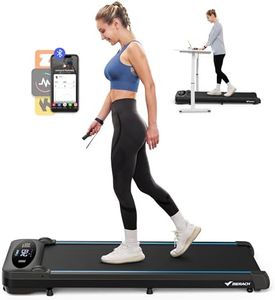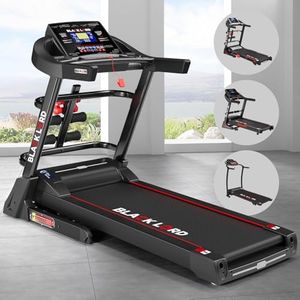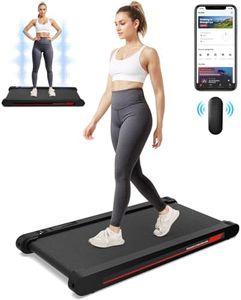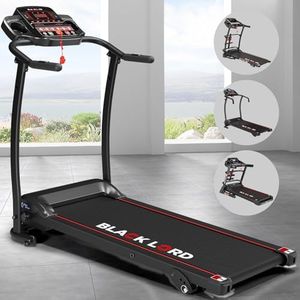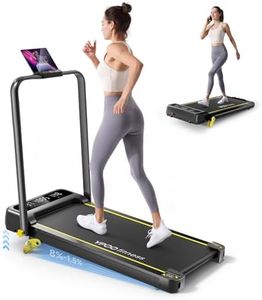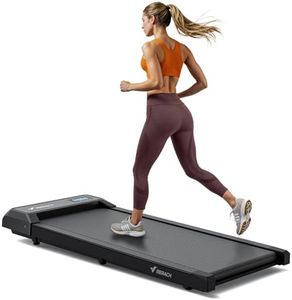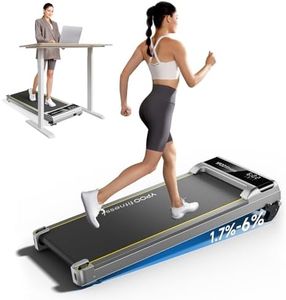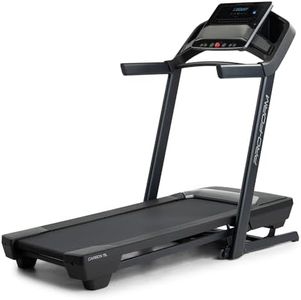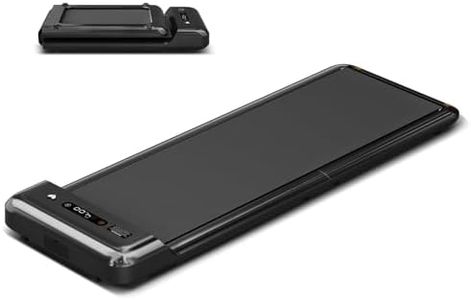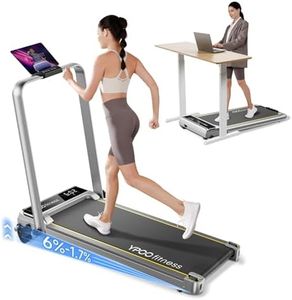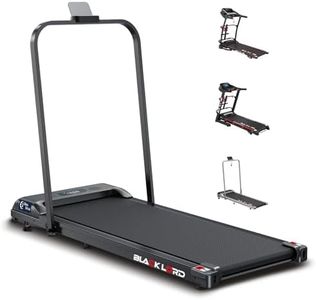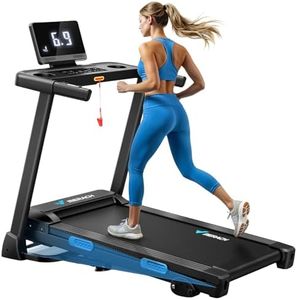We Use CookiesWe use cookies to enhance the security, performance,
functionality and for analytical and promotional activities. By continuing to browse this site you
are agreeing to our privacy policy
10 Best Home Treadmills
From leading brands and best sellers available on the web.Buying Guide for the Best Home Treadmills
Choosing a home treadmill can feel overwhelming given the many choices available. It's important to think about how often you’ll use it, the space you have at home, and the kind of workouts you want to do. Start by getting clear on your goals, whether it’s walking, jogging, running, or some mix. Think about where you’ll place the treadmill and measure your space. Lastly, focus on the key specifications that match your needs—don’t be swayed by flashy features unless they matter to your fitness routine.Motor PowerMotor power, usually measured in horsepower (HP), affects how smoothly and quietly the treadmill runs and how well it handles different speeds and user weights. A lower HP motor (around 1.5–2.0 HP) may suit light walking, while a mid-range (2.0–3.0 HP) is good for jogging. For frequent runners or multiple users, higher HP motors (over 3.0 HP) provide durability and less strain. Consider what kinds of workouts you’ll do and choose a motor that matches your intensity.
Running Surface SizeThe running surface refers to the length and width of the treadmill belt. A smaller surface (around 16''x50'') is often enough for walkers with limited space, but running benefits from more room (around 20''x55'' or longer) for comfort and safety. Taller users or those with a long stride should look for even longer belts. Always pick a running surface that supports your natural stride for comfortable movement.
Cushioning SystemCushioning helps absorb some of the impact on your joints while you walk or run. Some treadmills have basic padding, while others offer advanced shock absorption. If you have joint issues or are sensitive to impact, choose a treadmill with stronger cushioning for extra comfort. Walkers may not require as much as frequent runners, so consider your exercise habits and body needs here.
Maximum User WeightThis tells you the highest body weight safely supported by the treadmill. It ensures safety, longevity, and top performance. If you’re close to a treadmill’s weight limit, choose a model with a higher capacity to avoid straining the machine. It's wise to pick a treadmill that supports at least 20% more than your current weight for added peace of mind.
Incline OptionsIncline means the treadmill belt can tilt upward, simulating walking or running uphill. This increases workout intensity and burns more calories. Some treadmills offer manual incline adjustments, others are automatic. If you want more challenging workouts, look for higher incline ranges and easy adjustability. Walkers may not need steep inclines, but runners and those seeking variety may appreciate a broader range.
Foldability and PortabilityFoldable treadmills save space when not in use and are often easier to move. If you have a small living area or need to store the treadmill away, look for one that folds and has wheels. Walkers and casual users benefit most here, but regular runners too if space is limited in their home.
Console FeaturesThe console hosts controls, display information such as speed, time, distance, heart rate, and offers features like pre-programmed workouts or connectivity. Focus on what genuinely helps you stay motivated—maybe heart rate monitoring or simple buttons. Fancy entertainment systems are nice but not necessary unless they help you stick with your workouts.
Noise LevelTreadmills can be noisy, which matters if you live in an apartment or share space. Some are designed to operate more quietly, often due to better motors and solid construction. If noise is a concern, seek reviews mentioning quiet operation and consider placement in your home. Walkers can usually find quieter machines than runners.
